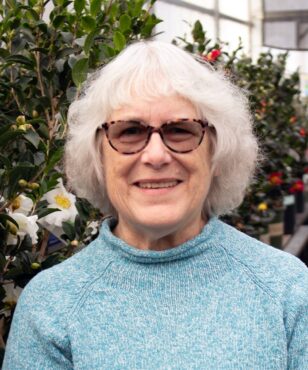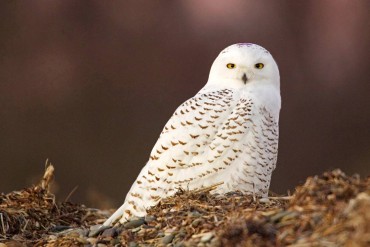 The holidays are a time for resting a bit from gardening tasks and especially a time for friends and family. Since gardening and birds often go together, if you’re lucky, you may see a snowy owl (Bubo scandiacus) passing through this region. It’s also a good time to select and peruse gardening books for yourself or for a gift for those gardeners in your life.
The holidays are a time for resting a bit from gardening tasks and especially a time for friends and family. Since gardening and birds often go together, if you’re lucky, you may see a snowy owl (Bubo scandiacus) passing through this region. It’s also a good time to select and peruse gardening books for yourself or for a gift for those gardeners in your life.
Snowy Owls
Snowy owls spend over half their lives in the Arctic Circle. But West Sound is on their migration route as they search for food and a getaway from harsh, arctic-winter storms.
November through February is a good time to watch for snowy owls. The Audubon Christmas Bird Count reports sightings of snowy owls during more than 50 percent of the winters in this region. The owls hung out at the Nisqually National Wildlife Refuge two years in a row during 2013 and 2014.
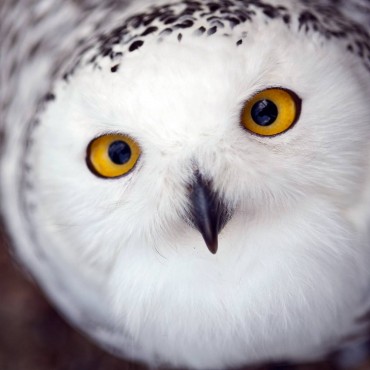 Snowy owls are the largest owls in North America. They are noted for their nearly-all-white bodies, rounded heads (no earlike feathers), yellow eyes and feather-covered legs. The males are nearly all white but females have brown and/or black spots on their bodies (to better blend into Arctic ground and snowy fields during wintering in the northern areas of the United States.)
Snowy owls are the largest owls in North America. They are noted for their nearly-all-white bodies, rounded heads (no earlike feathers), yellow eyes and feather-covered legs. The males are nearly all white but females have brown and/or black spots on their bodies (to better blend into Arctic ground and snowy fields during wintering in the northern areas of the United States.)
During summer, they hunt and nest in the Arctic Circle region. Females nest on the ground, laying anywhere from three to 11 eggs. Eggs are laid over several days, one per day, every two to three days. Incubation is 31 to 33 days. Chicks also hatch out over several days.
Food sources are primarily lemmings but also ptarmigan, rabbits, rodents, other birds and fish. An adult snowy owl eats three to five lemmings per day, averaging out to 1,600 lemmings in a year, supplemented with rodents, birds and fish.
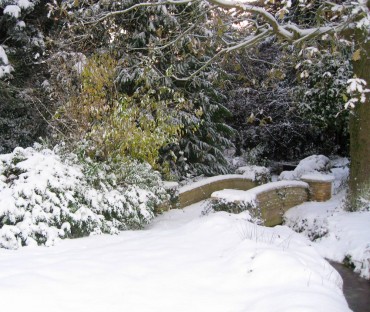 The owls live and nest in open fields and near the shore. To aid in hunting, snowy owls have very keen eyesight and excellent hearing. In the Arctic during most of their lives and in northern areas of the United States during wintertime, they can be seen at shorelines, lakes, along the ocean, on agriculture land and near open spaces surrounding airports.
The owls live and nest in open fields and near the shore. To aid in hunting, snowy owls have very keen eyesight and excellent hearing. In the Arctic during most of their lives and in northern areas of the United States during wintertime, they can be seen at shorelines, lakes, along the ocean, on agriculture land and near open spaces surrounding airports.
Winter is also a good time to sight barn owls, which are sometimes mistaken for snowy owls. Barn owls are smaller, have different markings, and their heads are shaped differently.
Gardening Books Galore
These books could be added to your holiday wish list or purchased for gift giving. Better yet, pick up two — one for you and one for a friend.
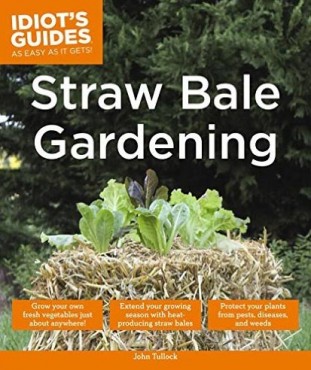 “Straw Bale Gardening” by John Tullock
“Straw Bale Gardening” by John Tullock
Part of the Idiot’s Guide series, “Straw Bale Gardening” is a step-by-step guide, with photos and illustrations on how to garden in a small space, find and create more gardening space, or how to use this method to prepare soil over time for growing more produce.
Out of all the books on straw-bale gardening so far, this one is the most complete and the most user-friendly. Everything a person would want to know, whether novice or seasoned, is explained in Tullock’s book. Most of the photos are supplied by Tullock, a noted vegetable grower, author and blogger.
Even if a person didn’t want to know how to straw-bale garden, the information on each vegetable — when to plant; how to space the plantings; and how to fertilize, water and harvest — is very valuable. There’s even a section on how to identify and deal with pests that sometimes are found in produce gardens. Organic methods are used in Tullock’s book.
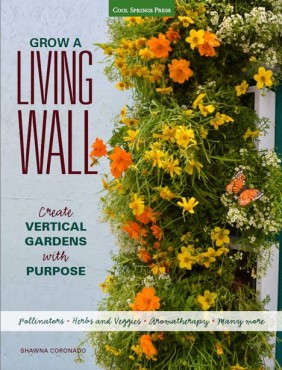 “Grow A Living Wall” by Shawna Coronado
“Grow A Living Wall” by Shawna Coronado
Books from Cool Springs Press are always appealing from front to back, with lovely and user-friendly illustrations. Coronado wanted to entice gardeners to “grow up,” as in vertical gardening, from rather small to quite extensive. She’s done her homework and the illustrations and how-to information are packed with ways to entice gardeners to think completely outside the constraints of gardening on and in the ground.
Each chapter lists tools and materials and shows step-by-step photos on how to construct the living-wall gardens. Coronado is a sustainable and organic gardener, featured in blog posts, columns, television and on radio. All the information plus 20 complete designs, from tiny to tremendous, will lure readers into trying out at least one of the vertical garden/living walls explained in this lovely book.
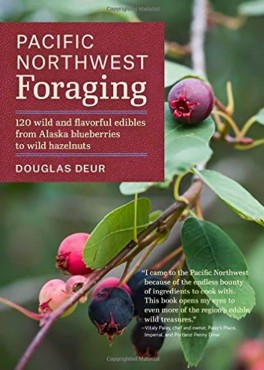 “Pacific Northwest Foraging” by Douglas Deur
“Pacific Northwest Foraging” by Douglas Deur
Timber Press never disappoints with its books written by luminaries in the Pacific Northwest. Foraging is on the upswing and gardeners are hungry to learn more about the edible plants in the region. West Sound gardeners are no exception.
This book is a tremendous resource for those who want to learn more about becoming foragers or simply to know what’s good to eat and what’s not ever to be eaten in our region. It is also a great resource for planting edible natives to attract and feed the wildlife sharing our lands.
Deur writes about the smallest weeds to the tallest trees. The book includes a seasonal guide for year-round foraging, detailed information for safe identification, collecting tips for sustainable harvesting and ideas for preparation and use. It covers Southwest Alaska, British Columbia, Washington and Oregon.
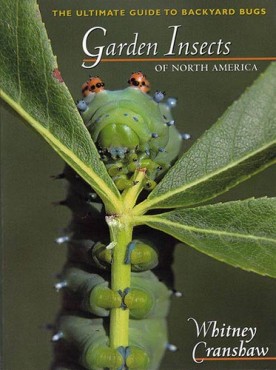 “Garden Insects of North America” by Whitney Cranshaw
“Garden Insects of North America” by Whitney Cranshaw
Have you ever been puzzled by that insect or unidentifiable, insect-looking critter on or near a plant in your garden? Then this book will aid in becoming an insect detective. It covers all of North America but with plants being sent from all over the country to local garden centers and nurseries, who knows when one of these lovely insects will show up in a West Sound garden.
Remember, more than 90 percent of the insects in gardens are beneficial do no harm. But, just in case, this book will help solve those queries about insects discovered on plants. If you were to purchase only one book on insect identification, this should be the one.
It is easy to navigate and easy to find insects based on where they may be found in gardens. There are sections on leaf chewers; leafminers; flower, fruit and seed feeders; sap suckers; gall makers; stem and twig damagers; trunk and branch borers; root, tuber and bulb feeders; plus a section describing how to tell if the insect is beneficial or a pest. If I didn’t already own this book, it would be on my “want” list.
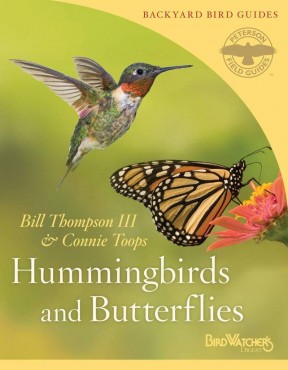 “Hummingbirds and Butterflies” by Bill Thompson III and Connie Toops
“Hummingbirds and Butterflies” by Bill Thompson III and Connie Toops
This, too, is one of my all-time favorite books, published in 2011 by Bird Watchers Digest (in case you can’t find it locally). Experts Thompson and Toops provide top-notch and well-researched information, tips and photographs on hummingbirds and butterflies.
The book covers the whole United States but provides very complete information on our local hummingbirds and butterflies. Another amazing feature of this book is the map accompanying a very complete list of pollinator plants found in particular regions of the country. The plant list includes annuals, perennials, natives, vines, shrubs and trees.




